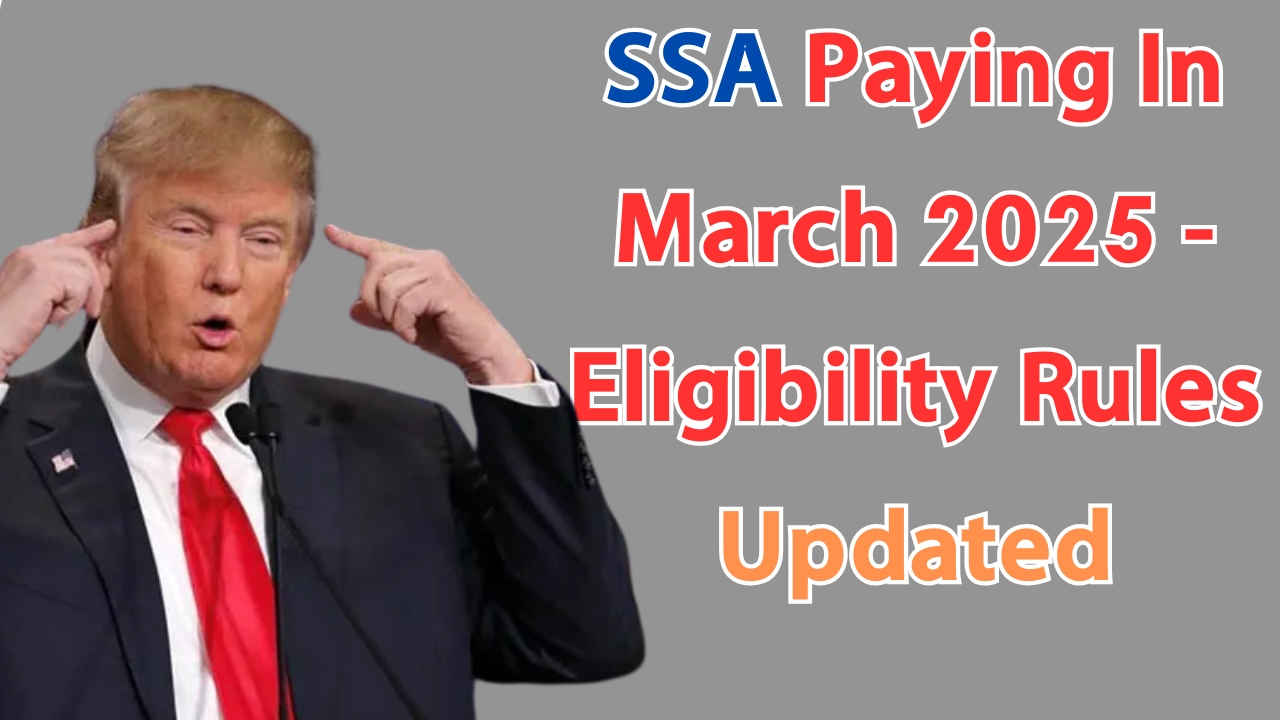As March 2025 approaches, millions of Americans are anticipating their Social Security Administration (SSA) payments.
This comprehensive guide delves into the latest updates on payment schedules, eligibility rules, and important information for beneficiaries.
Whether you’re a retiree, disability recipient, or Supplemental Security Income (SSI) beneficiary, understanding these updates is crucial for effective financial planning.
March 2025 Payment Schedule
The SSA follows a structured payment system based on beneficiaries’ birth dates and the type of benefits they receive. Here’s the breakdown for March 2025:
-
SSI Recipients:
-
Payment Date: Friday, February 28, 2025
-
Reason: The regular payment date (March 1) falls on a Saturday, so payments are issued on the preceding business day.
-
-
Social Security Beneficiaries:
-
Wednesday, March 12: For those born between the 1st and 10th of the month
-
Wednesday, March 19: For those born between the 11th and 20th of the month
-
Wednesday, March 26: For those born between the 21st and 31st of the month
-
-
Special Cases:
-
Monday, March 3, 2025: Beneficiaries who started receiving Social Security before May 1997 or those who receive both Social Security and SSI
-
It’s important to note that these dates are for direct deposit recipients. Those receiving paper checks may experience slight delays due to mailing times.
Updated Eligibility Rules for 2025
The SSA has made several updates to eligibility rules for 2025. Here’s what you need to know:
Social Security Retirement Benefits
-
Age Requirements:
-
Minimum age to claim: 62 years
-
Full Retirement Age (FRA):
-
66 years and 8 months for those born in 1958
-
66 years and 10 months for those born in 1959
-
67 years for those born in 1960 and later
-
-
-
Work Credits:
-
Minimum required: 40 credits (equivalent to 10 years of work)
-
In 2025, you earn one credit for every $1,640 in covered earnings, up to a maximum of four credits per year
-
-
Earnings Limit:
-
If you’re under FRA: $23,400 annual limit
-
Year you reach FRA: $62,160 limit (applies only to months before reaching FRA)
-
At FRA or older: No earnings limit
-
Supplemental Security Income (SSI)
-
Resource Limits:
-
$2,000 for individuals
-
$3,000 for couples
-
-
Income Limits: Vary based on your living situation and state supplements
-
Citizenship and Residency:
-
Must be a U.S. citizen or national, or in a certain category of aliens
-
Must reside in one of the 50 states, District of Columbia, or Northern Mariana Islands
-
Social Security Disability Insurance (SSDI)
-
Medical Eligibility: Must have a medical condition that meets the SSA’s definition of disability
-
Work Credits: The number required varies based on your age when you become disabled
-
Recent Work Test: Must have worked for a certain number of years before becoming disabled
Benefit Amounts for 2025
Understanding potential benefit amounts can help in financial planning. Here are the key figures for 2025:
Social Security Retirement Benefits
-
Maximum benefit at Full Retirement Age: $4,018 per month
-
Maximum benefit at age 62: $2,831 per month
-
Maximum benefit at age 70: $5,108 per month
Average Benefits
-
Average retirement benefit: $1,976 per month
-
Average benefit for couples (both receiving benefits): $3,089 per month
Supplemental Security Income (SSI)
-
Maximum federal benefit for individuals: $967 per month
-
Maximum federal benefit for couples: $1,450 per month
Social Security Disability Insurance (SSDI)
-
Average SSDI payment: $1,620 per month
-
Maximum for blind recipients: $2,700 per month
-
Trial work period amount: $1,160 per month
Cost-of-Living Adjustment (COLA) for 2025
The SSA has implemented a 2.5% cost-of-living adjustment for 2025. This increase affects all Social Security and SSI beneficiaries, helping to offset rising living costs.
Recent Legislative Changes
The Social Security Fairness Act of 2023, which took effect in January 2024, has brought significant changes:
-
Elimination of the Government Pension Offset (GPO)
-
Removal of the Windfall Elimination Provision (WEP)
-
Potential benefit increases for public sector retirees, including those under the Civil Service Retirement System (CSRS)
-
Retroactive adjustments for affected retirees dating back to January 2024
These changes could result in substantial increases for some beneficiaries, potentially adding $500 to $1,000 to their monthly payments.
How to Check Your Payment Status
-
Online: Use your my Social Security account at www.ssa.gov
-
Phone: Call the SSA at 1-800-772-1213
-
In-person: Visit your local Social Security office (appointment recommended)
Remember to wait at least three business days after the scheduled payment date before reporting a missing payment.
Tips for Beneficiaries
-
Keep Your Information Updated: Notify the SSA of any changes in address, marital status, or income.
-
Consider Direct Deposit: It’s the safest and most reliable way to receive your benefits.
-
Review Your Annual Statement: Check your earnings record and estimated benefits annually.
-
Understand Work Impacts: If you’re working while receiving benefits, know how your earnings might affect your payments.
-
Plan for Taxes: Some beneficiaries may need to pay taxes on their Social Security benefits.
Future Considerations
While current benefits are secure, long-term funding challenges persist. The Social Security trust funds are projected to be depleted by 2034, potentially leading to reduced benefits if no legislative action is taken.
However, policymakers are actively discussing solutions to ensure the program’s long-term stability.
SSA Paying
As we approach March 2025, understanding your Social Security benefits, payment schedule, and eligibility rules is crucial for financial planning.
Whether you’re a current beneficiary or approaching eligibility age, staying informed about these updates can help you maximize your benefits and prepare for the future.
Remember, the Social Security Administration is your best resource for personalized information about your benefits. Don’t hesitate to reach out to them with any questions or concerns.
